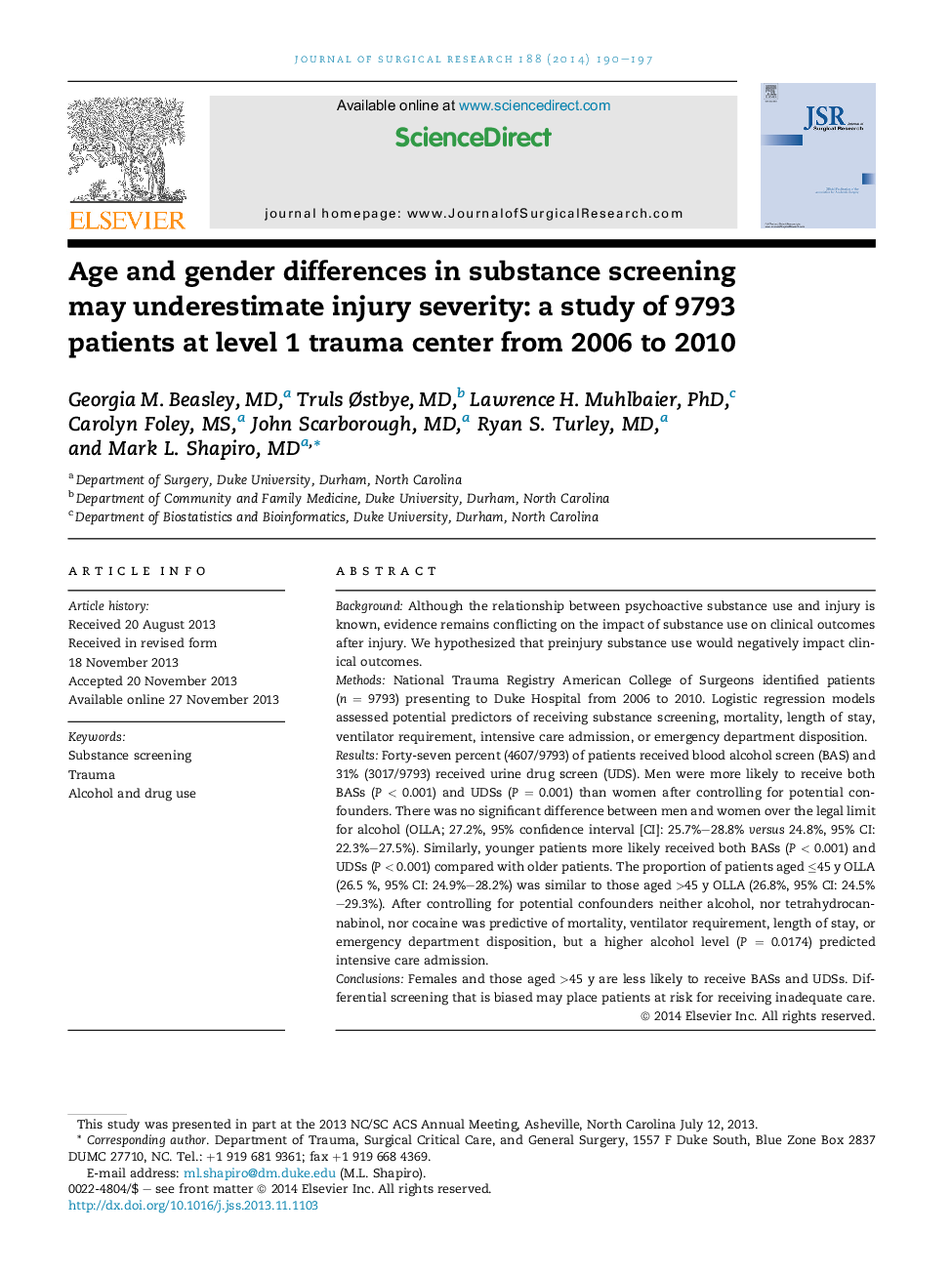| کد مقاله | کد نشریه | سال انتشار | مقاله انگلیسی | نسخه تمام متن |
|---|---|---|---|---|
| 4300238 | 1288416 | 2014 | 8 صفحه PDF | دانلود رایگان |
BackgroundAlthough the relationship between psychoactive substance use and injury is known, evidence remains conflicting on the impact of substance use on clinical outcomes after injury. We hypothesized that preinjury substance use would negatively impact clinical outcomes.MethodsNational Trauma Registry American College of Surgeons identified patients (n = 9793) presenting to Duke Hospital from 2006 to 2010. Logistic regression models assessed potential predictors of receiving substance screening, mortality, length of stay, ventilator requirement, intensive care admission, or emergency department disposition.ResultsForty-seven percent (4607/9793) of patients received blood alcohol screen (BAS) and 31% (3017/9793) received urine drug screen (UDS). Men were more likely to receive both BASs (P < 0.001) and UDSs (P = 0.001) than women after controlling for potential confounders. There was no significant difference between men and women over the legal limit for alcohol (OLLA; 27.2%, 95% confidence interval [CI]: 25.7%–28.8% versus 24.8%, 95% CI: 22.3%–27.5%). Similarly, younger patients more likely received both BASs (P < 0.001) and UDSs (P < 0.001) compared with older patients. The proportion of patients aged ≤45 y OLLA (26.5 %, 95% CI: 24.9%–28.2%) was similar to those aged >45 y OLLA (26.8%, 95% CI: 24.5%–29.3%). After controlling for potential confounders neither alcohol, nor tetrahydrocannabinol, nor cocaine was predictive of mortality, ventilator requirement, length of stay, or emergency department disposition, but a higher alcohol level (P = 0.0174) predicted intensive care admission.ConclusionsFemales and those aged >45 y are less likely to receive BASs and UDSs. Differential screening that is biased may place patients at risk for receiving inadequate care.
Journal: Journal of Surgical Research - Volume 188, Issue 1, 1 May 2014, Pages 190–197
